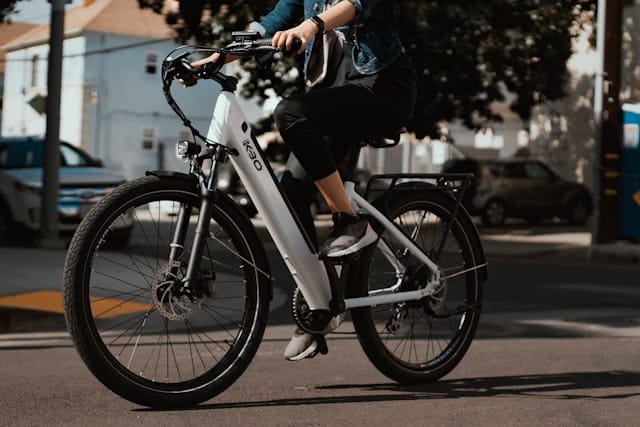Commuting by electric bike has become increasingly popular in the UK, offering a practical, eco-friendly, and cost-effective alternative to cars and public transport. With a multitude of models on the market, selecting the ideal one for your needs can be a daunting task. This article aims to guide you through the process, from understanding the basics of electric bikes to choosing the right one for your daily commute.
Understanding Electric Bikes
Before delving into the specifics of individual models, let’s take a moment to understand what an electric bike, often referred to as an e-bike, is. An e-bike is essentially a bicycle with an integrated electric motor that can be used for propulsion. This motor is powered by a rechargeable battery, which provides assistance to the cyclist, reducing the effort required to pedal, particularly on hills or long rides.
A découvrir également : Where can I take a break with the Turbo pass Rome ?
Most e-bikes have a pedelec system, meaning the motor assistance is triggered when you start pedalling. This could take you up to 25km/h on UK roads before the motor stops assisting. If you’re looking for a more relaxed ride without peddling, you’ll need an e-bike with a thumb throttle.
In the UK, the power of an e-bike motor is limited to 250 watts, and the bike must have fully operable pedals. You must also be over 14 years old to ride an electric bike on public roads.
A lire aussi : What’s the Latest in Nanomedicine for Cancer Treatment?
Factors to Consider When Choosing an E-bike
When choosing the best electric bike for your commute, several key factors come into play.
Range and Battery Life
One of the first things to consider is the range of the e-bike, which refers to the distance it can cover on a single charge. This is largely determined by the battery capacity, the motor’s power, the weight of the bike, and your riding style.
A bike with a high-capacity battery and efficient motor will provide a longer range. However, it’s worth noting that larger batteries will increase both the weight and cost of the bike. Aim for a bike with a range that comfortably covers your daily commute distance. Remember, it’s always better to have a little extra range than not enough.
Weight and Portability
Weight is another crucial factor to consider, especially if your commute involves carrying the bike up stairs or using public transport. Lighter bikes are also easier to ride without motor assistance, should your battery run out of juice.
If space is an issue, you might consider a folding e-bike. These bikes can be compactly folded up when not in use, making them ideal for commuters who need to store their bike in a small office, take it on a train, or keep it in a small flat.
Power and Speed
The power and speed of an e-bike are largely determined by its motor. As previously mentioned, the UK law restricts e-bike motors to 250 watts. Bikes with this power can comfortably reach speeds of 15.5 mph, which is sufficient for most commutes.
Comfort and Design
Comfort should never be compromised, especially if you’re commuting long distances. Choose a bike with a comfortable saddle, ergonomic handlebars, and a design that suits your body shape and riding style.
Hybrid e-bikes are a great option for commuters. They combine the comfort of a road bike with the durability of a mountain bike, making them ideal for city commutes.
Testing the E-bike
Once you have narrowed down your options, it’s time to take your potential e-bike for a spin. This will give you a feel for the bike’s handling, weight, power, and overall comfort. Make sure to test the bike on a route similar to your daily commute, taking into account the road conditions and gradient.
It’s also important to test the bike’s performance when the battery is low. This will give you an idea of how the bike handles without motor assistance.
Maintenance and Aftercare
Lastly, consider the maintenance and aftercare of the e-bike. Like any bike, e-bikes require regular maintenance to keep them in good working order. This includes checking the brakes, tyres, gears, and, importantly, the battery and motor.
Some brands offer comprehensive aftercare packages, which can include servicing and replacement parts. It’s worthwhile considering these packages, particularly if you are reliant on your e-bike for your daily commute.
Choosing the right electric bike for your commuting needs in the UK is an investment in your health, environment, and pocket. By considering your specific needs and doing thorough research, you will find an e-bike that makes your commute enjoyable, efficient, and sustainable.
Additional Features in Electric Bikes
Electric bikes come equipped with a variety of features designed to enhance your riding experience. These include technological advancements, safety features, and even some creature comforts that can make your ride more enjoyable than ever before.
One such feature is the pedal assist. As the name suggests, pedal assist is a feature that helps you pedal your bike. It’s especially useful for long commutes or for tackling those uphill routes. The higher the pedal assist level, the less effort you’ll need to put into pedalling. Most electric bikes have between three and five levels of pedal assist.
Another important feature to consider is the display panel. This panel usually shows your speed, battery level, and the distance you’ve travelled. Some high-end bikes also have GPS functionality embedded in their panels, helping you navigate your commute with ease.
Safety features are crucial in an electric bike. Look out for e-bikes with integrated lights to ensure visibility, especially during dawn and dusk commutes. A good braking system is also essential. Most electric bikes either have disc brakes or rim brakes. Disc brakes are generally considered more reliable, especially in wet weather conditions.
For added convenience, some electric bikes feature USB charging ports. This allows you to charge your phone or other devices while on the move.
When choosing the best electric bike for your commute, don’t forget to check these additional features. They may just make your ride smoother, safer, and more enjoyable.
Benefits of Commuting by Electric Bike
There are numerous benefits to commuting by electric bike. Here are a few that stand out:
Physical Health: Despite the assistance provided by the electric motor, cycling still remains a form of exercise. Regular biking can help improve cardiovascular fitness, build muscle strength, and boost mental health.
Eco-Friendly: Electric bikes are a green alternative to cars and public transport. They emit fewer greenhouse gases and help reduce traffic congestion in cities.
Cost-Effective: Apart from the initial investment, the running cost of an electric bike is considerably lower than that of a car. You save on fuel, parking, and maintenance costs.
Versatility: Electric bikes are suitable for a variety of terrains. Whether your commute involves city streets, country roads, or mountain trails, there’s an e-bike out there for you.
Convenience: With an electric bike, you can bypass traffic jams, and there’s no need to worry about finding parking. Plus, you don’t need a driving license or insurance to ride an e-bike in the UK.
In conclusion, choosing the right electric bike for your commute involves careful consideration of various factors including range, weight, power, comfort, and additional features. A test ride is vital to ensure that the bike fits your body and riding style. And lastly, a good aftercare package can ensure your e-bike stays in top condition. Whether you’re looking to improve your health, reduce your carbon footprint, save money, or simply enjoy your commute, an electric bike could be the perfect solution.















